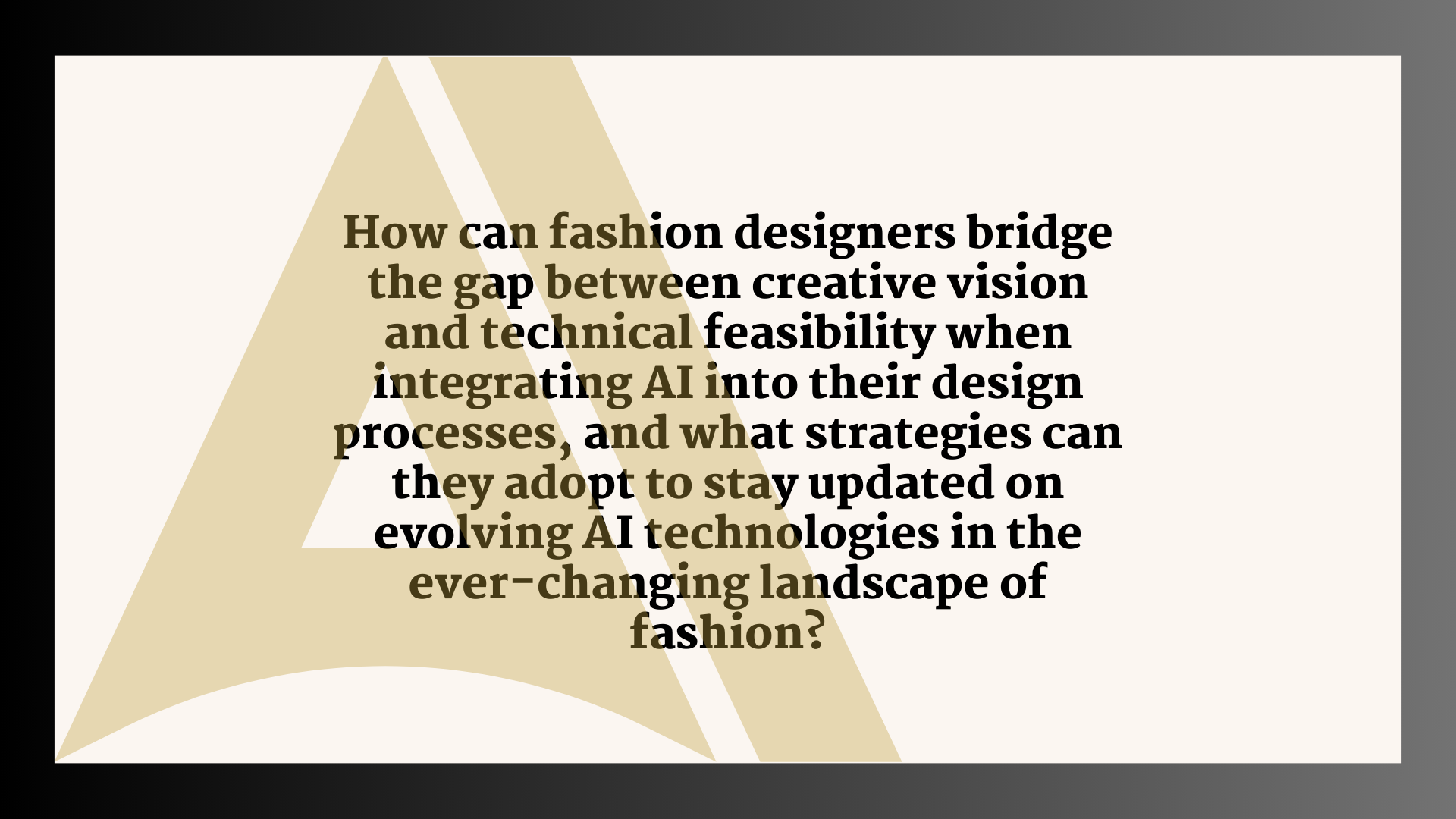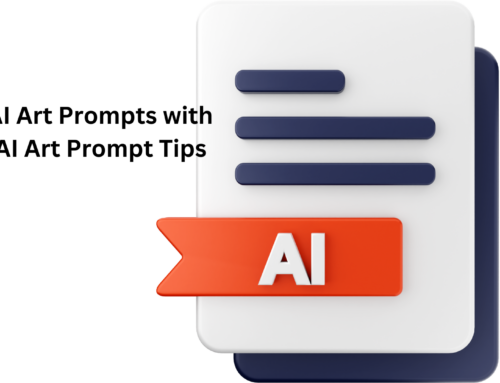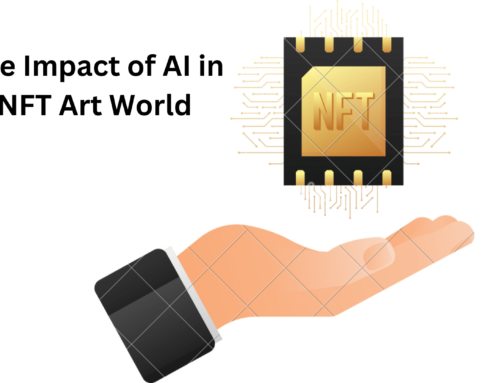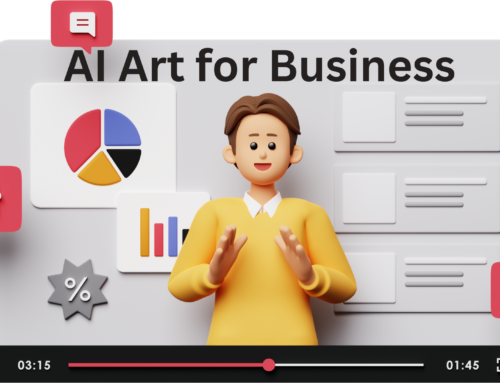Welcome to the exciting intersection of technology and style, where Artificial Intelligence (AI) is reshaping the landscape of the fashion industry. In this article, we’ll explore the fascinating world of AI in fashion design, delving into how this cutting-edge technology, often referred to as generative AI, is revolutionizing the design process for fashion brands. AI’s influence goes beyond mere automation, as it brings a creative touch to the table, enhancing innovation and efficiency in the ever-evolving world of fashion. Join us on this journey as we unravel the impact of artificial intelligence on the aesthetics and functionality of the garments we wear.

AI’s Impact on Fashion Design
Fashion designers and businesses are increasingly embracing the transformative power of AI in their creative processes. By integrating sophisticated algorithms and machine learning, designers can now explore new dimensions in garment creation, allowing for a seamless blend of technology and style. This not only streamlines the design workflow but also contributes to enhanced customer satisfaction through AI-generated personalization. Imagine clothing tailored to individual preferences and needs, a feat made possible by the capabilities of artificial intelligence. As Emma Bukowski Founder and designer, of Noserider Surf Club, says, “One of the most exciting features of AI art generators is the ability to personalize designs that reflect individual likes, style preferences, and the latest design trends. With AI, all body types, colors & sizes can be successfully modeled, which takes hyper-personalization to a higher level and can help explore Virtual Try ons (superimposing images on AI-generated models) and 3D modeling of fashion products for designers to see how their designs look from different angles. Fashion trend forecasting is another domain where AI tools can use machine learning and probabilistic programming to create futuristic product ranges for the target audience. It can take visual fashion data and past fashion data on what is the best-selling and most popular products and detect patterns and silhouettes that are likely to be in demand.
One challenge that designers face is the lack of technical background in understanding the technical feasibility of a design idea and how to express AI design ideas. Other challenges are the need for continuous learning regarding evolving technology, ownership of IP rights over AI-generated fashion designs, and the dangers of infringement”
The Rise of Artificial Intelligence in the Fashion Industry
In the dynamic world of AI fashion design, the impact on global fashion trends is remarkable. AI technology, acting as a powerful design tool, has found its way into prestigious events like Fashion Week, influencing and reshaping the landscape of fashion design concepts. By using generative AI, designers can now generate new designs and explore innovative possibilities in ways previously unimaginable.
The versatility of AI in fashion design is evident through various use cases, demonstrating how AI can help designers stay ahead in the competitive fashion market. From enhancing creativity to optimizing efficiency, the utilization of AI in fashion design continues to evolve, showcasing its potential to revolutionize the way we perceive and create fashion. As we delve deeper into the realms of AI-generated designs, it becomes clear that the future of fashion is intricately tied to the innovative applications of artificial intelligence.
Exploring the Infinite Possibilities of Generative AI in Fashion Industry
The transformative influence of generative AI in the fashion industry goes beyond just trends; it’s a catalyst for a new era of creativity. In various cases of AI for fashion, designers are harnessing the power of AI tools to generate new and innovative design ideas. “AI fashion design” and “generative AI” have become pivotal phrases, signifying the help of AI in reshaping the fashion design process. With the potential to be used across the spectrum of fashion, from retail to the creation of new fashion items, AI algorithms and systems are proving instrumental in pushing the boundaries of traditional design. The marriage of technology and fashion is not just a concept; it’s a tangible reality unfolding with the assistance of AI in crafting the future aesthetics of the fashion world.
Fashion companies are increasingly recognizing the value of using AI in fashion design to drive innovation and efficiency. The application of AI, particularly generative artificial intelligence, allows these companies to leverage advanced algorithms and AI design tools to analyze vast datasets and bring new design concepts to life. The future of fashion is being shaped by the seamless integration of AI in the fashion sector, where AI is revolutionizing traditional approaches to product design and bringing a fresh perspective to the field of fashion.
In this evolving landscape, AI is not merely a tool; it’s a dynamic force that influences design attributes and shapes the very essence of the fashion business. The collaborative synergy between human creativity and the capabilities of AI in fashion design is unlocking new dimensions, making the process more adaptive and responsive to the changing demands of the market. As we look ahead, it’s evident that the strategic use of AI is not just a trend but a transformative element that will continue to define the future landscape of the fashion industry.
Automating AI in Fashion Design Processes
In the fast world of fashion, leveraging AI is helping designers enhance their creativity and improve customer satisfaction. Here’s how AI is making a difference for fashion retailers:
- Using Generative Adversarial Networks (GANs): AI can use special networks to design new and cool fashion products. This helps designers be more creative and make things that customers will love.
- Analyzing Customer Information: AI can look at fashion data from customers to see what they like and what’s popular. This information helps fashion professionals create designs that improve customer satisfaction.
- AI Fashion Week: There are now AI Fashion Weeks where AI-made designs are shown. This not only allows designers to use new AI tools but also helps improve the fashion world by bringing in fresh ideas.
- Empowering Design Teams: AI helps design teams work better by giving them tools to be more creative. This collaboration with AI allows designers to design new and innovative fashion products.
- Mass-Market Fashion: AI is not just for expensive fashion; it’s also helping make stylish and affordable clothes for everyone. By using AI, fashion retailers can produce mass-market fashion that meets the needs of a wide audience.
In short, AI is not just a tool for doing things automatically; it’s changing how designers create, improving customer satisfaction, and becoming an essential part of the ever-changing fashion world for both high-end and mass-market fashion.

Designing the Future with Airbrush AI
Airbrush AI, as a text-to-image generator tool, is a revolutionary addition to the world of AI in fashion design. This powerful tool harnesses the potential of AI to generate visuals that can be seamlessly used in fashion design. Here are five key features and benefits of Airbrush AI:
- Effortless Visual Creation: Airbrush AI simplifies the process of creating visuals by transforming text descriptions into images effortlessly.
- Time Efficiency: This tool saves time for designers, allowing them to quickly generate visuals for their fashion designs, streamlining the creative process.
- Customization Options: Airbrush AI provides customization options, enabling designers to tailor visuals according to their specific design concepts and ideas.
- Enhanced Creativity: By using AI to generate visuals, designers can tap into a new level of creativity, exploring unique design possibilities and pushing the boundaries of traditional fashion concepts.
- Applicability in Fashion Retail: Airbrush AI is not just a creative tool; it has practical applications in fashion retail, providing a visual representation of design ideas that can be used in marketing and product presentations.
In today’s landscape of fashion, AI systems like Airbrush AI are transforming the way designers bring their ideas to life. With the potential to generate visuals quickly and efficiently, this tool is becoming an invaluable asset in the toolkit of fashion professionals, shaping the future of AI in fashion design.
Closing Thoughts on the Evolution of AI Fashion Design
In the ever-evolving world of fashion, the use of AI for design has become a game-changer. Thanks to AI, designers and fashion professionals are now able to foresee upcoming fashion trends and create future designs more efficiently. By leveraging generative AI models, fashion is still driven by the intuition of human designers, but now with the added power of technology. AI not only allows designers to explore new creative realms but also plays a crucial role in marketing and sales. As we look to the future, the collaboration between human creativity and AI innovation is leading fashion into uncharted territories, allowing designers to craft high-fashion pieces while staying in tune with the dynamic landscape of the industry. The utilization of AI in fashion design is not just a trend; it’s a transformative force shaping the future of design and the way we perceive style.








Leave A Comment